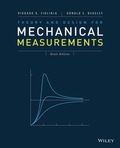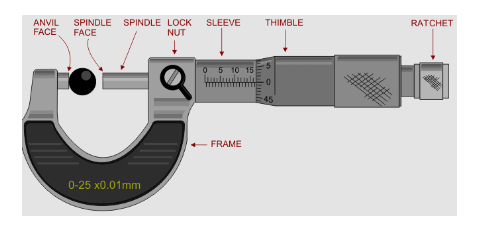
Concept explainers
By selecting three different types of measurement systems and identify which attributes of the system comprise the measurement stages.
Answer to Problem 1.1P
Following of measurement systems has been selected and attributed.
- Microphone/Amplifier/Speaker System.
- Room Heating Thermostat.
- Handheld Micrometer.
Explanation of Solution
Given information:
Measurement systems that we have studied.
The three distinct types of measurement systems are the speaker system, room heating thermostat, and handheld micrometer.

(i) Microphone/Amplifier/Speaker System:
Speaker systems are the principal components of the audio system. The principal components of a speaker system are the transducer, amplifier, and an output stage which consist about an output transducer. At the transducer stage, the input transducer collects sound waves and turns it to electrical energy.
At signal conditioning staging, the speaker system amplifies the electrical energy and at the output staging, the electrical energy is repeatedly converted into sound signals which are of high amplitude. That is when the intent of the speaker system is served. There are just transducer stage, signal conditioning stage and output staging.
(ii) Room Heating Thermostat:
Thermostats are primarily used to measure the temperatures. A thermostat senses the temperature of the room and thereby switches the cooling apparatus which is implemented in the place.
Select room thermostats equipped in houses estimate the temperature of the air in the room, if it is cool it will turn on the central heating, and when it gets too hot it tells the central heating to set off. Room thermostats need an unrestricted flow of air to sense the heat, so they must not be blocked by screens or fittings or put near heat sources.
In the room heating thermostat at sensor stage, it sense the temperature of the room and imparts a sign to the transducer, the transducer is combined to the signal conditioning stage and sends an output signal that might be the actuating the buzzer or switching on the room heating device consequently.
A feedback signal is received before the output stage and transferred back to the sensor stage continuously to control the heat of the room if it is getting too hot it will turn off the heating equipment automatically.

(iii) Handheld Micrometer:
The handheld micrometers are recognized for their precision but having a short measuring range these are superseded with laser micrometers.
Short lengths and depths of the channels can be found by using the handheld micrometer. These measurements are subjected to alternate, when the operator and operating conditions differs.
The micrometer should be taken with the hand and the object is to be embedded in the grips of the micrometer.
A torque must be employed against the machine taken in the jaws of the micrometer. The micrometer scale is displaced to some extent calibrated on the scale.

Conclusion:
Following measurement systems have been selected and attributed.
- Microphone/Amplifier/Speaker System.
- Room Heating Thermostat.
- Handheld Micrometer.
Want to see more full solutions like this?
Chapter 1 Solutions
Theory and Design for Mechanical Measurements
 Elements Of ElectromagneticsMechanical EngineeringISBN:9780190698614Author:Sadiku, Matthew N. O.Publisher:Oxford University Press
Elements Of ElectromagneticsMechanical EngineeringISBN:9780190698614Author:Sadiku, Matthew N. O.Publisher:Oxford University Press Mechanics of Materials (10th Edition)Mechanical EngineeringISBN:9780134319650Author:Russell C. HibbelerPublisher:PEARSON
Mechanics of Materials (10th Edition)Mechanical EngineeringISBN:9780134319650Author:Russell C. HibbelerPublisher:PEARSON Thermodynamics: An Engineering ApproachMechanical EngineeringISBN:9781259822674Author:Yunus A. Cengel Dr., Michael A. BolesPublisher:McGraw-Hill Education
Thermodynamics: An Engineering ApproachMechanical EngineeringISBN:9781259822674Author:Yunus A. Cengel Dr., Michael A. BolesPublisher:McGraw-Hill Education Control Systems EngineeringMechanical EngineeringISBN:9781118170519Author:Norman S. NisePublisher:WILEY
Control Systems EngineeringMechanical EngineeringISBN:9781118170519Author:Norman S. NisePublisher:WILEY Mechanics of Materials (MindTap Course List)Mechanical EngineeringISBN:9781337093347Author:Barry J. Goodno, James M. GerePublisher:Cengage Learning
Mechanics of Materials (MindTap Course List)Mechanical EngineeringISBN:9781337093347Author:Barry J. Goodno, James M. GerePublisher:Cengage Learning Engineering Mechanics: StaticsMechanical EngineeringISBN:9781118807330Author:James L. Meriam, L. G. Kraige, J. N. BoltonPublisher:WILEY
Engineering Mechanics: StaticsMechanical EngineeringISBN:9781118807330Author:James L. Meriam, L. G. Kraige, J. N. BoltonPublisher:WILEY





